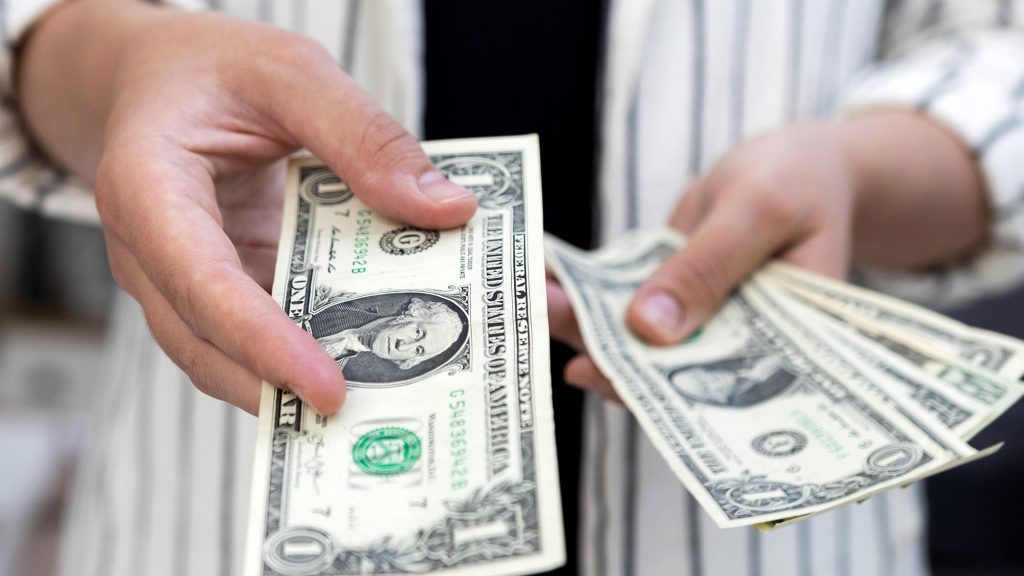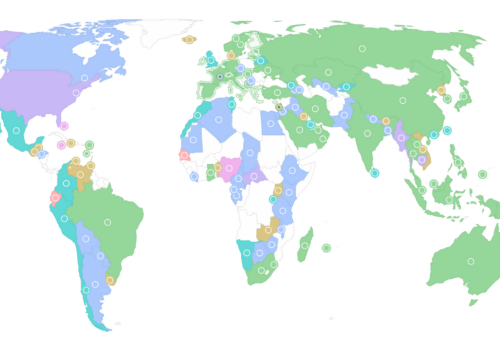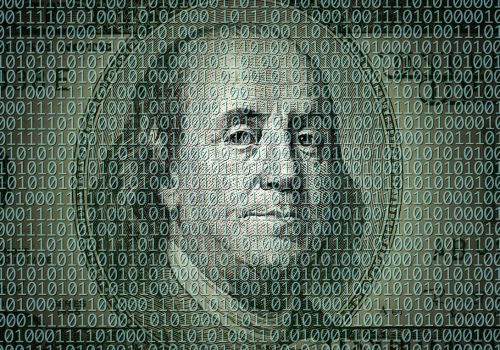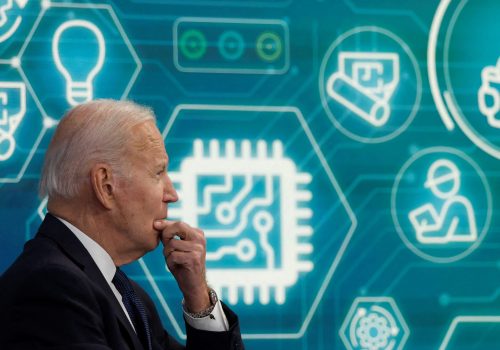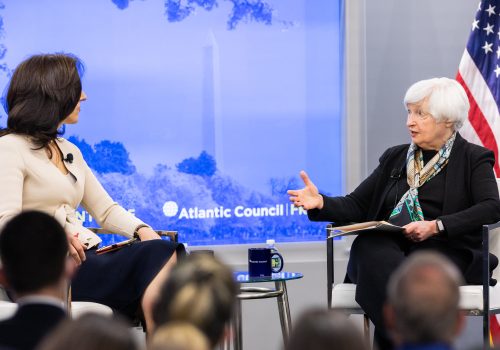The United States on Friday took a big step toward launching a central bank digital currency (CBDC). The Treasury Department recommended moving forward on development of a CBDC as part of the White House’s first-ever comprehensive framework on the responsible development of digital assets.
The framework follows US President Joe Biden’s March executive order in which he not only outlined the government’s approach to digital assets, but also asked several government agencies to jot up policy recommendations for the approach, tackling everything from the digital dollar to regulations on cryptocurrency.
We reached out to our experts from the GeoEconomics Center to tell us their top takeaways from the reports and what they mean for the United States’ role in the international financial system—and just how quickly the dollar can go digital.
Catch up on the global race for a CBDC with the GeoEconomics Center’s tracker
In this order, what’s the case the Biden administration is making for a CBDC?
The Biden administration is saying a digital dollar could provide faster payments and improve the way we all interact with the government and banks. Right now, even though we don’t see it, it can take hours or days for payments to “settle.” There are fees associated with this—ever wonder why a small business owner won’t accept a credit card payment for less than five dollars? A digital dollar could change all that and provide what US Treasury Secretary Janet Yellen has called a “faster, safer, and cheaper” option. But there are lots of questions that need to be answered. How do these digital dollars impact the current financial system? Can they protect your privacy? Are they safe from hackers? That work has been front and center for us at the GeoEconomics Center including our latest report on the topic.
Then there’s the international side; and this is as prominent as the domestic side in the reports, which is really fascinating. The Treasury Department says it wants to talk more with other countries, share knowledge on digital currencies, and help set international standards. Treasury recognizes that it is in the national interest to create a digital dollar and that there are national-security concerns connected to it.
What does that mean? It means that, as China is creating its own digital currency, the United States wants to make sure the model that proliferates around the world is one that respects democratic values—for example, privacy. But in order to do that, the United States needs to bring its own model to the table. Treasury is saying today that the United States is going to do that and that it’s a whole-of-government priority. The issue is urgent. As Atlantic Council research has shown, over one hundred countries representing 95 percent of global gross domestic product (GDP) are exploring a digital currency. Now with the United States stepping up its activity, nearly all of these countries are going to be asking what Washington will come up with and making sure their currencies work with the world’s reserve currency.
Russia plays a role in this too. The reports frequently mention wholesale CBDCs, or how banks transfer money to each other—different than the way we buy coffee. In the wake of Russia’s invasion of Ukraine and the Group of Seven’s (G7) sanctions, many countries are starting to explore ways around the dollar-based international financial transfer system. Digital currency could be an option—and that’s all the more reason that the United States needs to be front and center in these developments and have its own option.
—Josh Lipsky, senior director of the Atlantic Council’s GeoEconomics Center
What are the next steps, and how far away are we from being able to buy coffee with digital dollars?
The United States is far away! The digital euro is scheduled to go online in the middle of the decade and a digital dollar is well behind it. Most likely it will be several years until anyone is using a digital dollar in normal life. The first step is building a model that works—that will help around the world because other countries can learn from the United States and make their currencies work with ours. Then the United States would have to pilot the model—Congress needs to get involved at some point most likely—and then eventually move from pilot to launch. To put things in perspective, China started its work on this around 2016. They are still in the pilot phase, although it’s a big pilot with over 260 million users. So the United States is a long way away, but today is a big step.
—Josh
On cryptocurrency, is this new order a response to the upheaval we’ve been seeing in the markets?
Yes, there’s quite a bit in these reports that is a response to recent hacking and ransomware attacks, and there’s a lot of attention paid to new kinds of illicit-finance risks arising from the broad use of crypto. Around two billion dollars were stolen from crypto hacks this year, which puts added pressure on regulators and crypto companies to find solutions to this issue.
Given that another big news item of the year was the collapse of the stablecoin terraUST and how consumers who had invested heavily lost their savings overnight, a big focus of the reports was also on consumer- and investor-protection standards for digital assets. In the background, of course, there is the “merge,” which refers to the upgrading of Ethereum-based tokens from a less environmentally sustainable mining system (the proof of work consensus) to a more energy-efficient mining protocol (proof of stake). One of the Treasury reports gets into the environmental burdens of mining and, very interestingly, also explores how crypto can help monitor and support climate-mitigation efforts.
—Ananya Kumar, assistant director of digital currencies at the Atlantic Council’s GeoEconomics Center.
What’s the potential impact of new rules on a typical crypto user?
There are going to be many education efforts from agencies in keeping with the consumer protection goals of the administration, so that consumers can be aware of the risks of their purchases and sales. For the average crypto user, there is little immediate impact from these reports, and that’s because even though the reports identify potential policy options for crypto and stablecoin regulation, they do not actually change the regulation status quo domestically. The reports talk at length about how to enhance enforcement capabilities of the agencies, but what the crypto industry needs is clarification regarding which agency is going to be the right forum for their issues—and the reports don’t provide much there.
—Ananya
How is all this likely to be received on Capitol Hill, and what can we expect from Congress now?
Congress is already very active on the issues, and you can expect things will only accelerate from here. There is bipartisan consensus that there should be legislation around stablecoins—making sure things that say they are equivalent to a dollar truly are. But it’s much harder to find agreement on cyrptocurrencies and CBDCs. Most likely, the United States will get some new regulations around cryptocurrencies and stablecoins next year (probably not as strict as these reports would like) and some encouragement for the Federal Reserve’s work on a digital dollar. Congress doesn’t have to decide quite yet whether the Fed can give digital dollars out to Americans, but that decision will come in the near future.
—Josh
Further reading
Wed, Jun 15, 2022
Missing Key: The challenge of cybersecurity and central bank digital currency
Report By
New research on the cybersecurity challenges posed by digital currencies and design models that can provide a more secure financial system.
Fri, Mar 11, 2022
What does Biden’s executive order on crypto actually mean? We gave it a close read.
Markup By
What signals does this order send about the Biden administration’s approach to cryptocurrency as well as a potential central bank digital currency?
Wed, Apr 13, 2022
Janet Yellen’s message to the world: There can be no ‘sitting on the fence’ on Russia
New Atlanticist By
The US secretary of the treasury joined the Atlantic Council ahead of next week's IMF and World Bank meetings to address Russia's invasion of Ukraine and the economic fallout for the developing world.
Image: Woman holds US dollar banknotes in this illustration taken May 30, 2022. Photo via REUTERS/Dado Ruvic.
